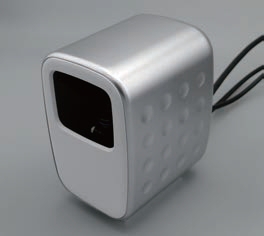Visible-infrared coaxial camera

Long-wavelength infrared (LWIR) is an electromagnetic wave with a wavelength of about 10 μm and is used in thermography cameras to measure the surface temperature of objects. Because its wavelength is more than 10 times different from that of visible light, which is commonly used to photograph objects, a LWIR camera contains information that cannot be obtained with a visible camera. For example, when glass is photographed with visible light, objects behind the glass are captured, but when photographed with LWIR light, objects behind the glass are not captured. Therefore, glass can be detected by combining a visible image and a LWIR image. The way objects are captured in visible images and LWIR images may differ greatly, so it may be difficult to estimate the corresponding points when two different cameras are placed side by side. Therefore, it is effective to use a coaxial camera that can capture images with the same optical axis. We have devised a compact coaxial camera that can capture both visible and LWIR images from the same viewpoint.
Publications
- Tomoyuki Takahata and Tatsuya Harada, “Glass detection using visible and long-wavelength infrared coaxial camera,” The 40th annual conference of the Robotics Society of Japan (RSJ2022), 2B1-03, 2022. (Japanese domestic conference)
- Tomoyuki Takahata and Tatsuya Harada, “Visible and far-infrared coaxial imaging system for object recognition of mobile robots,” The 37th annual conference of the Robotics Society of Japan (RSJ2019), 1L1-01, 2019. (Japanese domestic conference)